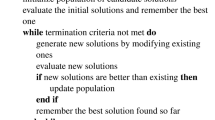Abstract
Although the gas metal arc welding (GMAW) process is widely used for joining metals, its planning is still a cumbersome task. The planning procedure involves many complex interrelationships among the process variables and depends heavily on empirical knowledge. Therefore, a solution method that allows a convenient way to represent the domain knowledge and evaluate the process variable relationships is needed. Further, the lack of a strong domain theory to quantify these interrelationships is a deficiency in the planning of the GMAW process. This paper presents a solution method that overcomes this deficiency and introduces a convenient knowledge representation scheme. The solution method considers the planning procedure to be a constraint satisfaction problem (CSP). The AC-4 algorithm is used to obtain arc consistency among nodes in the constraint network and the PC-4 algorithm is applied to obtain path consistency in the network. A modified version of the AC-4 algorithm is developed to reduce the search space and correspondingly reduce the computation time. An example is presented to demonstrate the capability of the method and its potential to reduce lead time.
Similar content being viewed by others
References
Barborak, D. M., Dickinson, D. W. and Madigan, R. B. (1991) PC-based expert systems and their applications to welding. Welding Journal, January, 29–38.
Bitner, J. R. and Reingold, E. M. (1975) Backtrack programming techniques. Communications of the ACM, 18(11), 651–656.
Bobrow, D. G. and Raphael, B. (1974) New programming languages for AI research. Computing Surveys, 6, 153–174.
Cary, H. B., (1991) Summary of computer programs for welding engineering. Welding Journal, January, 40–45.
Cary, H. B. (1994) Modern Welding Technology, Prentice-Hall Inc., Englewood Cliffs, NJ.
Dechter, R. and Pearl, J. (1988) Network-based heuristics for constraint satisfaction problems. Artificial Intelligence, 34, 1–38.
Descotte, Y. and Latombe, J.-C. (1981) GARI: a problem solver that plans how to machine mechanical parts, in Proceedings of Seventh International Joint Conference on AI, Vancouver, Canada, pp. 766–771.
Fox, M. S. (1983) Job shop scheduling: an investigation into constraint directed reasoning, Ph.D. Thesis, Carnegie-Mellon University, Pittsburgh, PA.
Frayman, F. and Mittal, S. (1987) COSSACK: a constraint-based expert system for configuration tasks. KB Expert Systems in Engineering, Planning and Design, Sriram, D. and Adey, R. A. (eds), Computational Mechanics Publications, MA, pp. 143–166.
Han, C.-C. and Lee, C.-H. (1988) Comments on Mohr and Henderson's path consistency algorithm. Artificial Intelligence, 36, 125–130.
Johnston III, J. G. and Hancock, G. C. (1989) An expert system for selecting welding procedures and quality assurance requirements, in Proceedings of the 1989 ASME Pressure Vessels and Piping Conference, Hawaii, pp. 55–59.
Kerth Jr, W. J. (1985) Knowledge-based expert welding. Robotic Welding: A Guide to Selection and Application, Piotrowski, A. III and Randolph, T. (eds), pp. 197–207.
Kuhne, A. H., Cary, H. B. and Prinz, F. B. (1987) An expert system for robot arc welding. Welding Journal, November, 21–25.
Kumar, V. (1992) Algorithms for CSPs: a survey. AI Magazine, 13(1), 32–44.
Kusiak, A. and Chen, M. (1988) Expert systems for planning and scheduling manufacturing systems. European Journal of Operational Research, 34, 113–130.
Kusiak, A. and Heragu, S. S. (1988) KBSES: Knowledge-based system for equipment selection. The International Journal of Advanced Manufacturing Technology, 3(3), 97–109.
Mackworth, A. K. (1977) Consistency in networks of relations. Artificial Intelligence, 8(1), 99–118.
McGlennon, J. M., Cassidy, G. and Browne, J. (1988) ROBOSPEC: A prototype expert system for robot selection, in Artificial Intelligence: Implications for CIM, Kusiak, A. (ed), IFS Publications, Springer Verlag, NY.
Mohr, R. and Henderson, T. C. (1986) Arc and path consistency revisited. Artificial Intelligence, 28, 225–233.
Montanari, U. (1974) Networks of constraints: fundamental properties and applications to picture processing. Information Science, 7(2), 95–132.
Raghunathan, S. (1992) A planning aid: an intelligent modeling system for planning problems based on constraint satisfaction. IEEE Transactions on Knowledge and Data Engineering, 4(4), 317–335.
Sicard, P. and Levine, M. (1986) MARS: An expert robot welding system, in Proceedings of NATO Advanced Research Workshop on Machine Intelligence and Knowledge Engineering for Robotic Applications, Wong, A. K. C. and Pugh, A. (eds), Maratea, Italy, pp. 355–385.
Tonkay, G. L. and Knott, K. (1989) An expert system for welding, in AI Manufacturing Theory and Practice, Kumara, S. T., Kashyap, R. L. and Soyster, A. L. (eds), Industrial Engineering and Management Press, Institute of Industrial Engineers, GA, pp. 647–686.
Tsatsoulis, C. (1987) Using dynamic memory structures in planning and its application to manufacturing, Ph.D. Thesis, Department of Mechanical Engineering, Purdue University, West Lafayette, IN.
Yetukuri, N. (1994) Intelligent manufacturing process design, Ph.D. Thesis, Department of Industrial Engineering, The University of Iowa, Iowa City, IA.
Yetukuri, N., Prescott, W. C. and Fischer, G. W. (1993) A methodology to support concurrent engineering in a simulated process evaluation environment (SPREE). Concurrent Engineering: Research and Applications (CERA), 1(4), 193–201.
Yetukuri, B., Yetukuri, N. and Fischer, G. W. (1996) SPAW: a design tool for planning a manufacturing process in a concurrent engineering environment. Computers in Industry, 32, 79–93.
Author information
Authors and Affiliations
Rights and permissions
About this article
Cite this article
YETUKURI , N.V., FISCHER , G.W. Planning the GMAW process by constraint propagation. Journal of Intelligent Manufacturing 8, 477–488 (1997). https://doi.org/10.1023/A:1018522702874
Issue Date:
DOI: https://doi.org/10.1023/A:1018522702874




